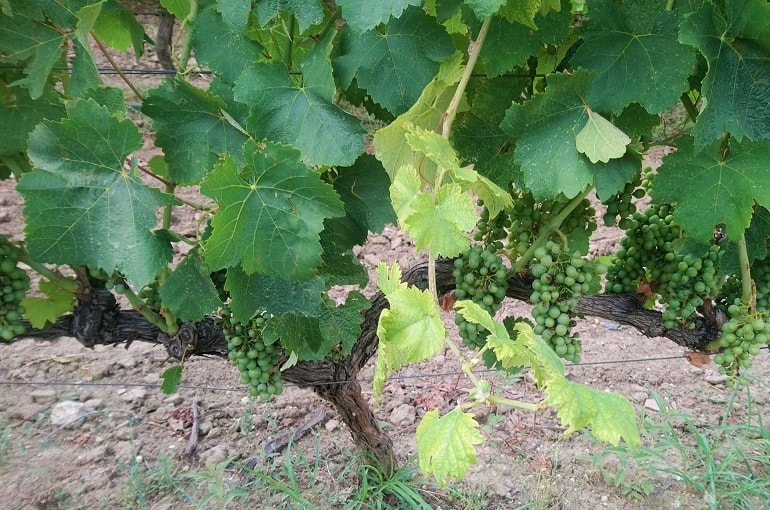Grape Plant Information

This post is also available in:
This post is also available in:
![]() Español (Spanish)
Español (Spanish) ![]() Français (French)
Français (French) ![]() Deutsch (German)
Deutsch (German) ![]() Nederlands (Dutch)
Nederlands (Dutch) ![]() हिन्दी (Hindi)
हिन्दी (Hindi) ![]() العربية (Arabic)
العربية (Arabic) ![]() Türkçe (Turkish)
Türkçe (Turkish) ![]() 简体中文 (Chinese (Simplified))
简体中文 (Chinese (Simplified)) ![]() Русский (Russian)
Русский (Russian) ![]() Italiano (Italian)
Italiano (Italian) ![]() Ελληνικά (Greek)
Ελληνικά (Greek) ![]() Português (Portuguese (Brazil))
Português (Portuguese (Brazil)) ![]() Tiếng Việt (Vietnamese)
Tiếng Việt (Vietnamese) ![]() Indonesia (Indonesian)
Indonesia (Indonesian) ![]() 한국어 (Korean)
한국어 (Korean) ![]() polski (Polish)
polski (Polish)
Grape Plant Wiki – Stages of Grape Growth
Grapevines belong to Vitaceae family, while the most commonly used varieties belong to Vitis vinifera species (European vine). Other Euvitis subspecies are used as rootstocks in areas with extended Phylloxera problem.
Grapevine is a perennial plant bush, characterized by helices – tendrils and trailing growth. It is a climbing plant and normally climbs on rocks or tree trunks. Tendrils grow on stems and are believed to be degenerated inflorescences. Leaves are big, opposite, heart resembled, and inflorescences grow across them. They may be terraced or lobed with 3-5 lobs and distinct nerves. The shape, size and color of leaves depend on the variety.
Buds are located on plant knees between axles, and are distinguished in 2 categories :
Primary (Winter) and Secondary Buds
During spring, we may observe a distinct swelling between stem and petiole. These are the secondary buds. Those are not normally going to sprout during the current growing period. They will most probably stay in lethargy. Next to this bud, there is the primary bud, which is normally going to sprout during the current growing period. In case the primary bud is damaged, usually because of winter frosts (primary bud necrosis), then the secondary bud is going to sprout. Buds give shoots which become canes when they mature.
Shoots produce the flower clusters right after sprouting. Flowers on clusters are small 3-4mm (0,12-0.16 inches) and white in color. Normal flowers are hermaphrodite. These flowers are fertilized and produce grape clusters. Grapes account for the vast majority (90-98%) of the cluster’s weight.
Grapes botanically are berries. The size and the color of grapes vary among different varieties. The color, which may vary from green to deep red, is a result of the grape content in anthocyanins and flavonoids. This content is basically affected by temperature, pH levels, the growing conditions, and the sugar content. Moreover, we have varieties with seeds and seedless varieties. Seeded varieties may carry up to 4 seeds. Seeds contain tannins at a rate of 4-6%.
Generally, the grapevine life cycle has 2 phases, the Growing Period and the Dormancy period.
The growing period is separated into three stages.
The first stage starts with sprouting and ends with blooming.
The second stage starts with blooming and ends with veraison (change of color of grapes)
The third stage starts with veraison and ends with maturing. During this stage, acidity normally decreases, while the content of sugars increases.
Dormancy starts right after leaf drop and ends with lacrimation (normally late autumn to winter – November to February). During this phase, vines rest. The plants do not perform any of their normal procedures. However, in the tropical zone, dormancy does not occur. Due to the fact that vines do not have to tolerate temperatures below 12 °C (53.6 °F), they escape this phase and the growing period may last up to 100-130 days.
Viticulture Definition – What is Viticulture?
Grape Plant Information
How to Grow Grapes for Profit- Commercial Grape Grower’s Essential Guide
Soil Requirements and Preparation for Grapevine Farming
Grapevines Planting and Plant spacing – Number of plants per hectare
Grapes Training Systems and Methods
Vine Pruning, Defoliation and Thinning
Grapes Irrigation and Water Management
Common Grapevine Pest and Diseases
Grape Harvesting – When and How to Harvest Vineyard
Grape Yield per Hectare and Acre








































































